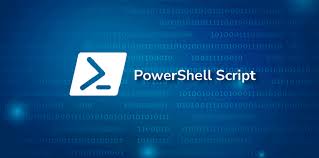PowerShell scripting allows you to automate tasks and create reusable scripts using the PowerShell language. PowerShell scripting involves writing a series of commands, known as a script, which can be executed as a single unit. Let’s explore some key concepts and techniques related to PowerShell scripting.
Script Files:
PowerShell scripts are typically saved in files with the .ps1 extension. These script files contain a sequence of PowerShell commands that are executed when the script is run.
Script Execution:
To execute a PowerShell script, you can either run it directly in a PowerShell console by specifying the script file’s path or use the PowerShell & (call operator) followed by the script file’s path. For example:
.\script.ps1 # Running a script directly
& "C:\Scripts\script.ps1" # Running a script using the call operator
Script Structure:
A PowerShell script typically begins with a shebang line (#!) or a comment specifying the PowerShell interpreter, followed by the actual script commands. Here’s an example:
powershellCopy
# This is a PowerShell script
Write-Host "Hello, World!"
Comments:
Comments in PowerShell scripts provide explanatory or descriptive information about the script. They start with the # symbol and are ignored by the PowerShell interpreter. Here’s an example:
# This is a comment
Write-Host "This is a PowerShell script."
Variables in Scripts:
Variables in PowerShell scripts are used to store and manipulate data. You can assign values to variables and use them throughout the script. Here’s an example:
$myVariable = "Hello, World!"
Write-Host $myVariable
Functions:
Functions in PowerShell allow you to define reusable blocks of code. You can create functions in your script to encapsulate a specific task or set of commands. Here’s an example:
function SayHello {
param(
[string]$name
)
Write-Host "Hello, $name!"
}
SayHello -name "John"
In this example, we defined a function named SayHello that takes a parameter $name and displays a greeting.
Script Flow Control:
PowerShell scripts support various flow control constructs, such as conditional statements (if, else, switch), loops (for, foreach, while), and error handling (try, catch, finally). These constructs allow you to control the execution flow based on specific conditions or iterate over collections of data.
Error Handling:
PowerShell provides mechanisms for error handling in scripts, such as the try-catch-finally construct. This allows you to handle and gracefully recover from errors that may occur during script execution.
Script Modules:
PowerShell script modules are reusable units of code that can be loaded and used in multiple scripts. Modules allow you to organize your code and share functionality across scripts.
These are some of the key concepts and techniques involved in PowerShell scripting. PowerShell provides a rich set of features, including access to .NET classes, integration with external tools, and much more. Exploring the official PowerShell documentation and resources will provide you with a deeper understanding of PowerShell scripting capabilities and best practices.
